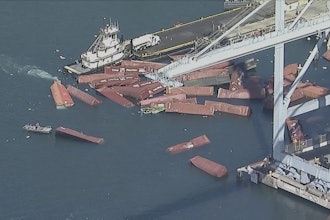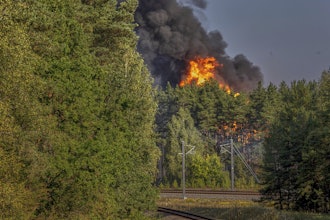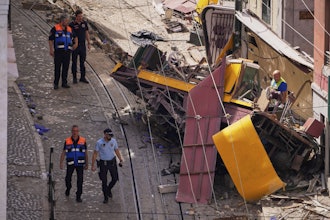Earlier this summer, new standards for respirable silica dust were put into effect by the Occupational Health and Safety Administration (OSHA) Crystalline silica, a carcinogen found in sand, stone and artificial stone, can cause silicosis, a chronic disease that involves scarring of the lungs. An estimated 2.3 million workers are exposed to silica dust each year, according to OSHA.
What does that mean for manufacturers? In this Q&A, Dave Anderson, Technical Director of the Risk Control Industrial Hygiene Specialist Group for Travelers, discusses the new requirement set to transform how manufacturers address a major worker safety risk.
IMPO: Tell me about the OSHA silica standard, which is now being enforced for general industry, including manufacturing. What are some work-related activities that have the potential for exposure to silica dust?
Dave Anderson: The Occupational Safety and Health Administration (OSHA) and the National Institute for Occupational Safety and Health (NIOSH) have reported that elevated exposures to respirable silica dust may be associated with the development of silicosis, as well as other debilitating occupational diseases and respiratory disorders. In March 2016, OSHA published its final rule related to the exposure limits for respirable silica containing dusts. The revised standards require specific actions when testing shows that workplace environments exceed the action level or permissible exposure limit and may require the implementation of engineering or administrative controls to reduce employees’ potential inhalation exposures. Organizations that are considered general industry — which OSHA defines as any industry not included in agriculture, construction or maritime — had until June 23, 2018 to comply.
Some specific processes are historically associated with the potential for exposure to crystalline silica. These include sandblasting, sand-casting foundry operations, mining, tunneling, cement cutting, concrete demolition, masonry work and granite cutting. The potential for exposure to crystalline silica can also occur in street and road construction, excavation and abrasive blasting in maritime work, construction and general industry.
IMPO: What are some of the steps that manufacturers can take to address OSHA’s respirable crystalline silica standard?
Anderson: First, manufacturers that have a potential silica hazard in the workplace can conduct exposure assessments to identify and evaluate specific work tasks and set an initial baseline for exposure.
After completing these assessments, manufacturers can then develop an action plan to address and help limit employee exposure as the OSHA standard may require. The action plan may include implementing engineering and work practice controls and using personal protective equipment.
For example, if the assessment shows that respirable silica dust levels are above the permissible limit, OSHA requires the manufacturer to establish a regulated area with engineering controls, such as exhaust ventilation, to address the exposure levels. If engineering controls are not feasible or capable of reducing exposure below the permissible exposure limit, employees in the regulated area may have to wear appropriate respiratory protection. Access to this area may also have to be closely controlled with warning signs posted.
IMPO: What steps can companies take to help limit the creation of and exposure to silica dust?
Anderson: Companies can consider steps to eliminate silica-containing materials or substitute materials that do not include silica. For example, glass beads may be suitable for use instead of silica sand for abrasive blasting. Another step to consider is the use of work practice controls, such as wet methods to help minimize the generation of silica containing dusts or engineering controls, like using local exhaust ventilation, to help remove dusts before they can escape to other areas of the workplace.
IMPO: Describe OSHA’s medical surveillance requirement. What sort of impact could this have on manufacturers?
Anderson: If you’re in general industry, you may be required to provide medical surveillance at no cost to employees when silica dust exposures are at or above the OSHA action level for 30 days or more per year.
OSHA states that the medical surveillance program must include medical examinations of the employees, including an initial round of baseline tests and reexaminations at certain intervals. In addition, the initial baseline examination must be conducted within 30 days of assignment and include medical and work history, a physical examination, a chest X-ray, a pulmonary function test, testing for tuberculosis and any other exam indicated by the healthcare provider. OSHA requires reexaminations every three years, unless the healthcare provider advises they occur more often. It is recommended that you closely review the medical surveillance requirement to address compliance with the new OSHA standard.
IMPO: Manufacturing is not the first industry to have silica standards. Construction, for example, is already dealing with this. Are there any lessons from the construction industry for which compliance was mandatory last year?
Anderson: Regardless of industry, proper planning to recognize, evaluate and, when needed, implement controls is critical. While construction may generally have more dynamic exposure patterns, it is still key for those in manufacturing to carefully review and evaluate tasks that may have exposure risks. It is recommended that risk managers and those in the company tasked with compliance with OSHA regulations carefully consider how those regulations apply to the specific and potentially unique circumstances of their business operations.
Anyone interested in learning more about this can check out the resources we have on our Risk Control website.























